Moving into a rental means gardening downsizes. There’s no point spending time and money on improving someone else’s soil, when the odds are we’ll move within a year. But small pots are so troublesome to look after, so I came up with this idea-now even our garden beds are transportable! We’ll just load them up onto the hire truck and take our soil and crops with us, and have no break in garden productivity. This one is based loosely on the wicking worm beds design, so it will suit us perfectly over winter here in Queensland. If you’re in a different climate you may want to do your drainage differently to suit. I know now I definitely need to cover them over summer-they dealt very badly with 100mL+ of rain in a day. Repeatedly.
Here’s how to do it. (note: i’d been stockpiling fill for this one in it, hence the dirtiness-I had to dig it all out to do it)
1. Find yourself a bathtub. Tip shops are a great place to start-ours charges $10 for a basic one, $15 with fittings.
2. Give it a good scrub out, taking special care to clean and dry the plughole. Now, silicon a 20cm length of pipe (pvc, poly etc) into the plug, making sure it’s watertight. Slather it on. Leave to dry completely.
3. Rubber band some flywire or nylon netting (something that won’t rot) over the opening of your pipe. This is your drainage outlet, and it is higher than the base to give you a water reservoir.
4. Make your two watering pipes. These are anchored in the beds, allowing you to water straight to the bottom of the bath, minimising evaporation. The length of pipe you will need depends on your bath-one end needs to sit on the bottom while the other will protrude from the soil. Drill holes all around the base of your pipes, to about 20cm up.
5. Fill your base with drainage material. Some people advocate rocks or sand, but they’re tiresome to clean out (which will need doing every few years). Sticks, unfit macadamias and poinciana pods from the backyard are a better option IMO-wood is a great water retainer, and they break down so sloooowly that nitrogen draw-down shouldn’t be a problem. Just keep it chunky.
6. Anchor your watering pipes in their places, using some of your soil. I went to step 7 before remembering to take the photo, sorry.
7. Throw a layer of mulch in-I used sugar cane, use whatever is available to you locally, that is weed-free. This gives it bulk and aeration. STOP worrying about nitrogen draw-down, i’ve got it under control here.
8. Now, add anything you’ve got in your garden that will give it nutrients. I’ve got comfrey leaves and a couple of borage plants that keeled over and died in the floods. Plus a few banana peels that the kids threw in on their way past-it’s all organic material, right?
9. Fill it up with growing medium! I think there’s some potting mix, cow manure and mushroom compost here, with a little dug-up garden soil to fill it up. Plus more of the icky macadamias, to save our bare feet. The food you get out of it will be equivalent to the quality of what you put in, so don’t be tempted to fill it up with crap-or you will eat crap.
10. Mulch well, water thoroughly and let sit for a couple of weeks. Then plant, wait and dine!
You could also build boxes for them out of timber from old pallets if they’re permanent, and paint them up nicely. You could use them around the edge of a patio, or instead of a rail along an edge in the garden. Grow herbs in them next to the BBQ, or right next to the back door…………
Sorry I don’t have any raging success photos to show you-they didn’t do too well with torrential rain and they’re just getting back on their feet after I replanted them. However, they’re full and growing well now, give me another month or so!
MAINTENANCE
They’re pretty easy to look after, but here’s a few pointers.
-Like any plant in a container, they’ll need regular feeding. I throw on a few handfuls of mulch from the chook run when it’s getting sparse-this will not burn them in small amounts. Any mulch that will also feed it is great. We also have a slow-release organic fertiliser-make sure anything you buy is CERTIFIED organic. Organic is slapped on many, many garden products that aren’t ‘organic’ in the non-chemical means.
-Don’t let them get too wet. They do not drain quickly. That is the idea, so there’s plenty of moisture in dry times.
-Seedlings and seeds will need water from above until their roots hit the wet zone.
-They will probably need to be dug out and re-done periodically. I’ve had some going for 9 months and they’re fine, so I have no idea how often. It sounds like a crappy task so look after the soil in them and you should be able to drag it out to once every couple of years.
Just use good sense, follow basic container planting guidelines, and you should be fine.

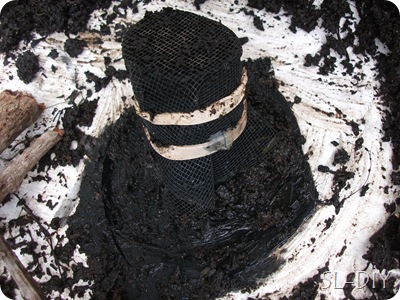
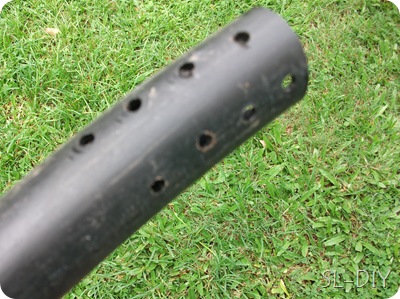
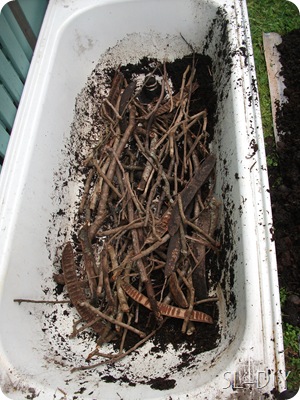
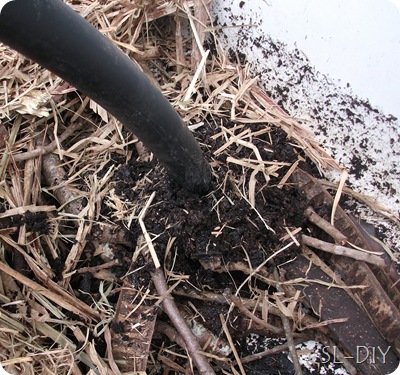

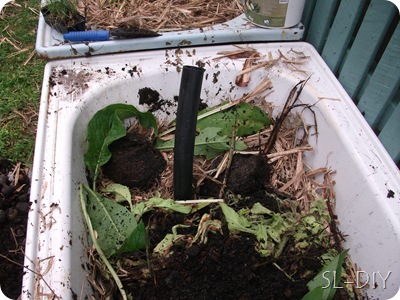
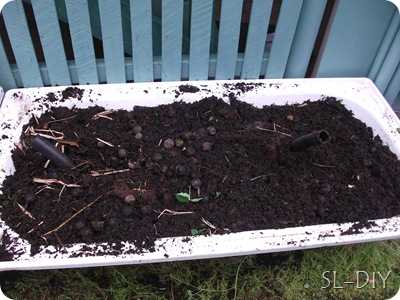
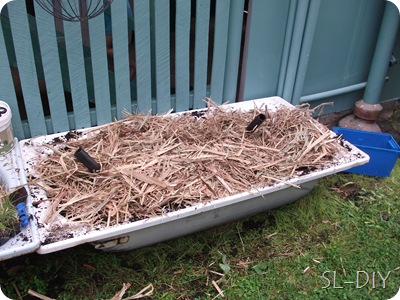
No comments:
Post a Comment
I love your feedback! Feel free to add to, question or (constructively) criticise what you've read here. It all adds to our knowledge.